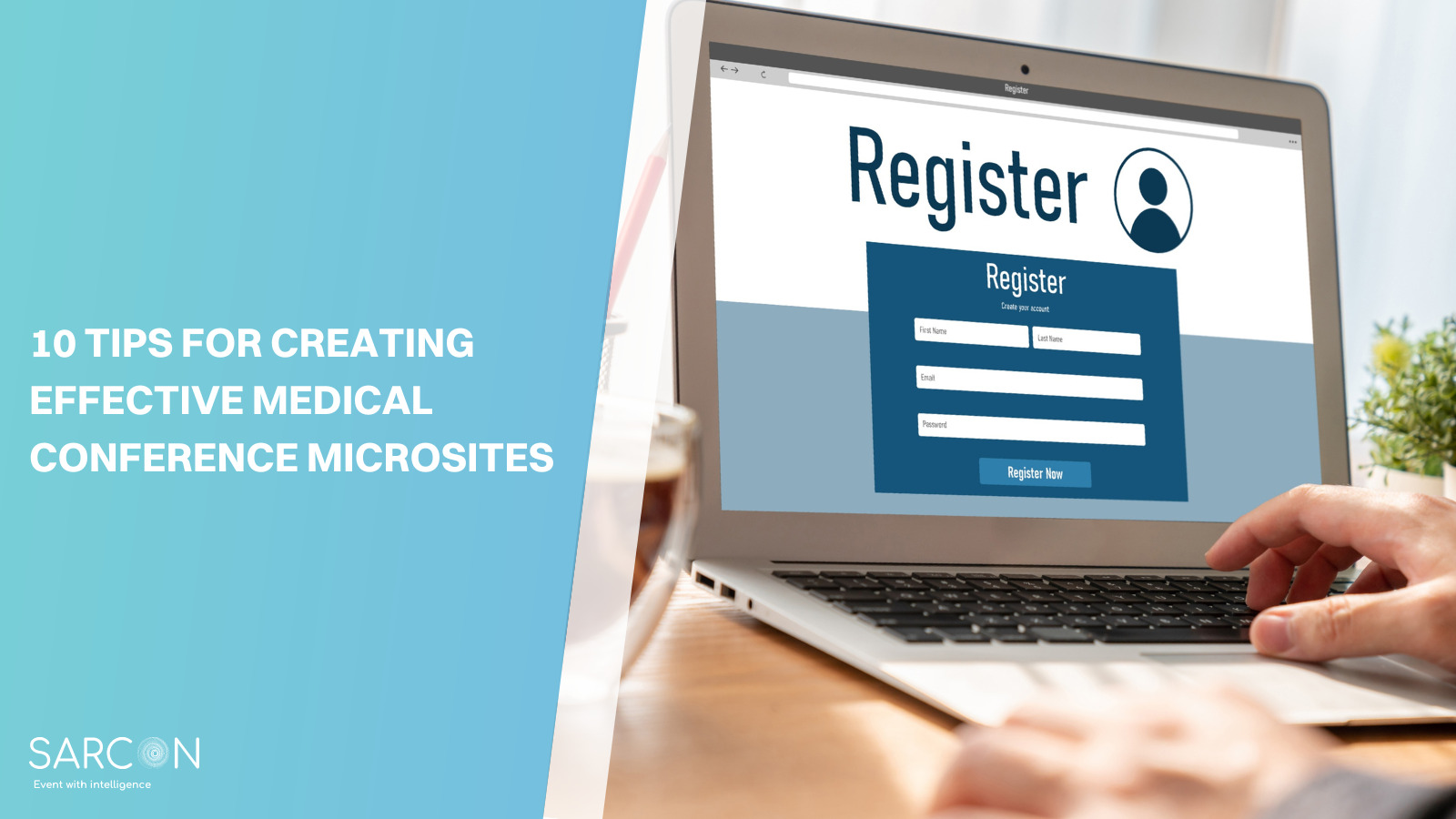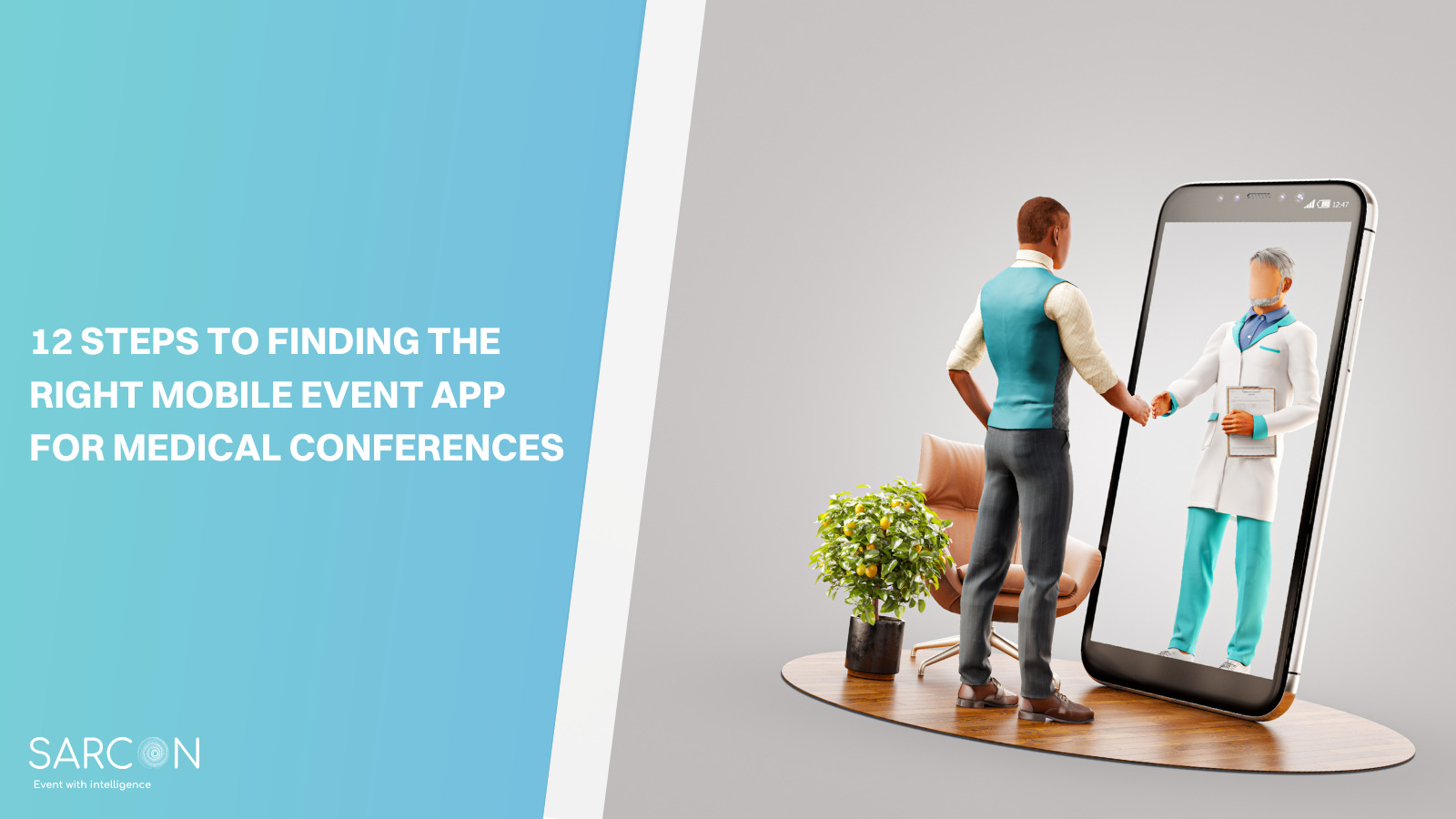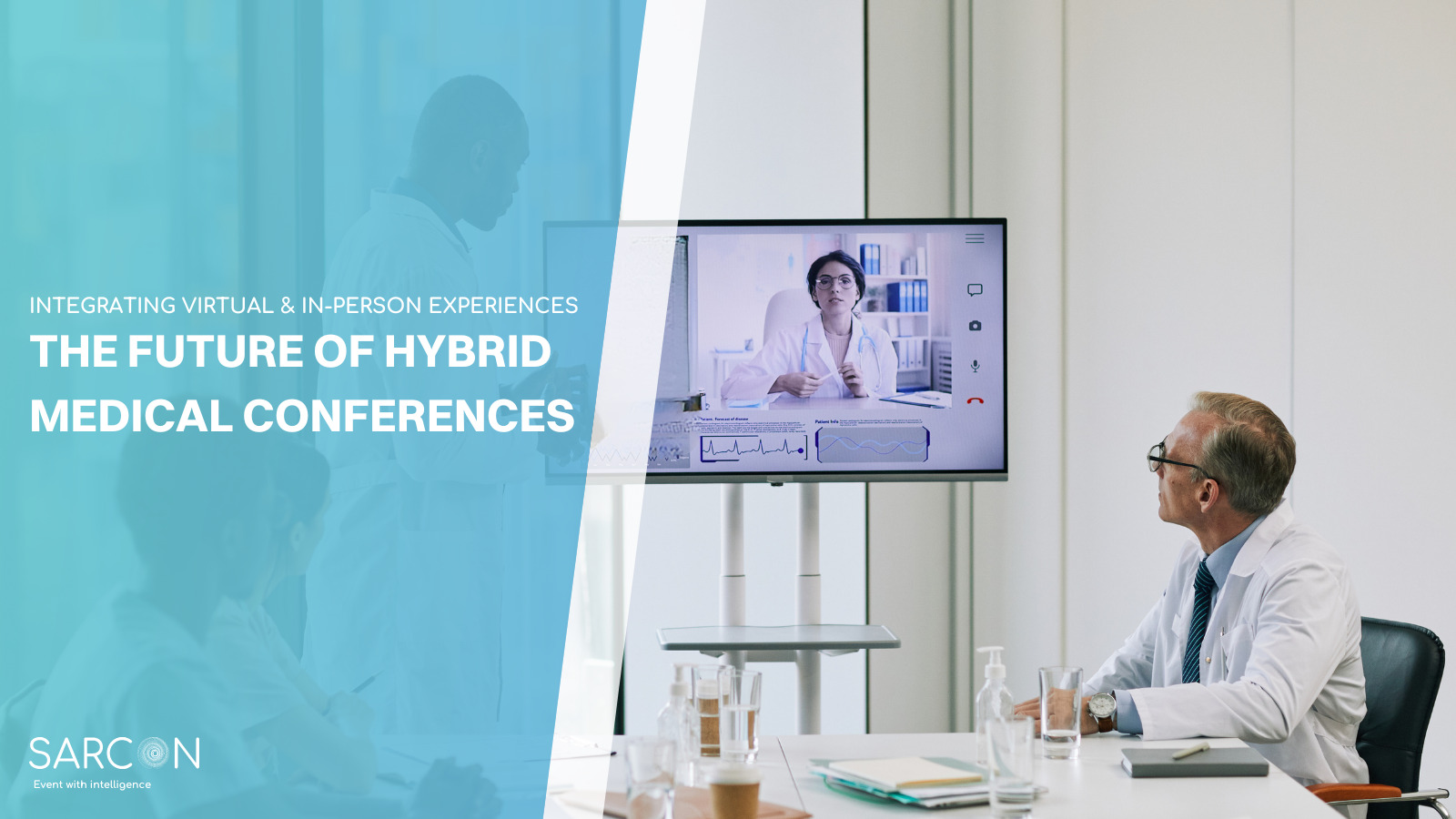Medical conferences are vital events that bring together healthcare professionals, researchers, and industry experts to share knowledge, network, and advance healthcare practices. In today’s digital age, creating a well-designed medical conference microsite is not just a good practice; it’s essential. A medical conference microsite serves as the online epicenter of your event, providing crucial information, registration, schedules, and more. In this blog, we’ll explore ten tips to help you create an effective medical conference microsite that engages your audience and ensures the success of your event.
Leveraging the Power of Microsites
What Is a Microsite?
Before we dive into the tips, let’s define what a microsite is. A microsite is a small, standalone website designed to serve a specific purpose. In the context of medical conferences, a microsite is created to provide attendees with essential information, updates, and resources related to the event.
Why Are Medical Conference Microsites Essential?
Medical conference microsites play a crucial role in providing a centralized hub for attendees to access information. They offer numerous benefits, including easy navigation, quick access to schedules, speaker bios, and resources. Creating an effective microsite can significantly enhance the conference experience.
For information read our Complete Guide 2023: How to Organize a Medical Conference
Tip 1: Define Your Goals
- Setting Clear Objectives for the Microsite : One of the first steps in creating a medical conference microsite is to define your goals. Ask yourself what you want to achieve with this online platform. Are you aiming to increase registration numbers, provide information to attendees, promote sponsors, or enhance engagement? By clearly defining your objectives, you can ensure that every element of the microsite is aligned with your goals.
Top Tip – Sarcon’s Microsite feature is top notch, and has all the features you look for for a Medical Conference. - Aligning Goals with the Conference’s Purpose: It’s vital that your microsite’s goals align with the broader objectives of the medical conference itself. For instance, if your conference primarily aims to disseminate groundbreaking research, your microsite should prioritize easy access to research abstracts, papers, and presentation details.
- Measuring Success: After setting your goals, it’s equally important to measure your microsite’s success. Implement tracking mechanisms like Google Analytics to monitor visitor behavior, traffic sources, and conversion rates. Regularly assess how well your microsite is meeting its goals and be prepared to make adjustments if necessary.
Tip 2: Know Your Audience
- Identifying the Target Audience for the Conference: Understanding your audience is fundamental. Consider whether your attendees are healthcare professionals, researchers, or industry representatives. Tailoring your content, design, and user experience to the specific needs and preferences of your audience will enhance their experience.
- Tailoring Content and Design to Meet Audience Expectations: Your content should resonate with your audience. Medical professionals may require in-depth scientific information, while industry representatives might be more interested in sponsorship opportunities and networking events. Adapt your content to cater to their expectations.
- Ensuring Accessibility and User-Friendliness: Making your microsite accessible to all users is crucial. Follow Web Content Accessibility Guidelines (WCAG) to ensure that people with disabilities can navigate your site. Additionally, prioritize user-friendliness by using an intuitive layout and clear labels.
Tip 3: User-Friendly Navigation
- Organizing Information Effectively: A well-organized microsite makes information easy to find. Categorize and label content logically, and provide a search function for quick access to specific information. Ensure that your site’s structure is clear and coherent.
- Intuitive Menu and Navigation Structure: Your menu and navigation should be intuitive. Essential sections like the agenda, speakers, registration, and contact information should be prominently displayed and easily accessible from every page. Consistency in navigation menus throughout the site enhances user experience.
- Mobile Responsiveness: With many users accessing websites via mobile devices, it’s essential to ensure that your microsite is responsive. Choosing a Mobile compatible CME Conference Platform is important. It should adapt to various screen sizes and maintain usability on smartphones and tablets. Mobile responsiveness is a key component of user-friendliness.
Tip 4: Engaging Content
- Importance of Compelling Content :High-quality content is at the heart of an engaging microsite. Offer informative articles, blog posts, and resources that provide value to your audience. Engaging content keeps users coming back for more.
- Utilizing Multimedia (Images, Videos, Infographics): Incorporate multimedia elements such as images, videos, and infographics to make your content more engaging. For a medical conference, consider including video previews of sessions, interviews with speakers, and interactive infographics highlighting key statistics. Visual content can significantly enhance the user experience.
- Keeping Information Updated: Regularly update your microsite with the latest information. Changes in the schedule, speaker additions, or new research findings should be promptly reflected on the site. Outdated content can lead to confusion and frustration for users.
Tip 5: Registration and Ticketing
- Streamlining the Registration Process: Make the registration process as straightforward as possible. Avoid asking for unnecessary information and provide a progress indicator so users can see how far they’ve progressed in the registration process. A seamless registration experience encourages more attendees to sign up.
- Secure Payment Processing: If your conference involves registration fees, ensure that the payment process is secure and easy to use. Use SSL encryption and work with trusted payment processors to instill confidence in your attendees.
- Integration with Event Management Tools: Integrate your microsite with event management tools that simplify attendee management. These tools can include badge printing, attendee tracking, and communication features, streamlining the event organization process for both organizers and attendees.
Tip 6: Agenda and Schedule
- Displaying Conference Schedule: The conference schedule is a central piece of information that your attendees will look for. Present the agenda in a clear, easy-to-read format using tables or timelines. Include session times, topics, and locations for easy reference.
- Speaker Profiles and Session Details: Offer detailed profiles of your speakers and provide information about their credentials and the topics they’ll be covering in their sessions. Attendees should have easy access to this information to make informed decisions about which sessions to attend.
- Personalized Agenda Building: Allow attendees to build their personalized agenda by selecting sessions of interest and adding them to their schedule on the microsite. This feature enhances the user experience and helps attendees plan their days effectively.
Tip 7: Sponsorship and Exhibitor Information
- Showcasing Sponsors and Exhibitors: Highlight sponsors and exhibitors on the microsite. Create dedicated sections that include logos, descriptions, and links to their websites. This not only promotes your sponsors but also provides attendees with valuable information about the companies involved.
- Options for Promotional Visibility: Offer different sponsorship packages with varying levels of visibility on the microsite. This can include banner ads, sponsored content, and featured listings. Differentiation in promotional visibility provides a variety of options for your sponsors.
- Linking to Sponsor Websites: Make sure that sponsor and exhibitor listings include direct links to their websites. This allows attendees to learn more about the services, products, and offerings of the companies involved, further strengthening their engagement.
Tip 8: Social Media Integration
- Leveraging Social Media for Promotion: Leverage social media integration to promote your medical conference and engage with your audience. Include social media buttons for sharing content and create conference-specific hashtags for easy tracking and engagement.
- Social Sharing and Engagement Features: Enable social sharing buttons on key pages and content, encouraging attendees and participants to share updates, information, and highlights. This not only promotes your conference but also fosters a sense of community and networking among attendees.
- Real-time Updates: Keep your audience engaged during the conference by sharing real-time updates on social media platforms. This can include live-tweeting sessions, sharing photos and highlights, and engaging with attendees in real-time. Social media can be a powerful tool for fostering connections and generating excitement.
Tip 9: Accessibility and Compliance
- Ensuring ADA Compliance: Make your microsite accessible to individuals with disabilities. Follow Web Content Accessibility Guidelines (WCAG) to ensure that everyone, regardless of their abilities, can access and use the site. Accessibility is not only an ethical consideration but also a legal requirement in many regions.
- Security and Privacy Measures: Protect user data and ensure the security of your microsite. Use HTTPS to encrypt data transmission and implement robust data protection measures. This is especially crucial if your conference involves the collection of sensitive medical or personal information.
- GDPR Considerations: Compliance with relevant data protection regulations is a must if your medical conference deals with sensitive data. Ensure that your microsite is GDPR (General Data Protection Regulation) compliant to protect user privacy and data.
Tip 10: Analytics and Feedback
- Implementing Analytics Tools: To measure the success of your microsite, implement analytics tools such as Google Analytics. These tools allow you to track user behavior, traffic sources, and conversion rates. Regularly review this data to assess your microsite’s performance and make data-driven improvements.
- Gathering Attendee Feedback: After the conference, collect feedback from attendees through surveys or feedback forms. Their insights can help you understand what worked well and what areas need improvement. Attendee feedback is invaluable for making your future conferences even better.
- Continuous Improvement: Use the data and feedback you’ve gathered to make continuous improvements to your microsite and your conferences. Address any issues, refine your content, and optimize the user experience based on user input and data. Each conference should be better than the last.
Conclusion
Creating effective medical conference microsites is essential for delivering a successful and memorable event. By following these 10 Tips for Creating Effective Medical Conference Microsites, you can engage your audience, provide valuable information, and boost your online presence. Remember, a well-designed and user-friendly microsite is a powerful tool to enhance the conference experience and leave a lasting impression.
FAQs
How do I ensure my medical conference microsite stands out from the competition?
To stand out, focus on user-centric design, engaging content, and mobile optimization. Ensure your microsite provides a seamless and valuable experience for attendees.
Why is real-time updates important for a medical conference microsite?
Real-time updates keep attendees informed about any changes or additions to the conference schedule, ensuring they have the most current information at their fingertips.
How can I track the success of my medical conference microsite?
You can use analytics tools to monitor user engagement and gather feedback from attendees, helping you make data-driven improvements for future conferences.
What is the most crucial aspect of a successful medical conference microsite?
User-centric design is key. Prioritize a seamless, user-friendly experience to ensure attendees can easily access the information they need.



